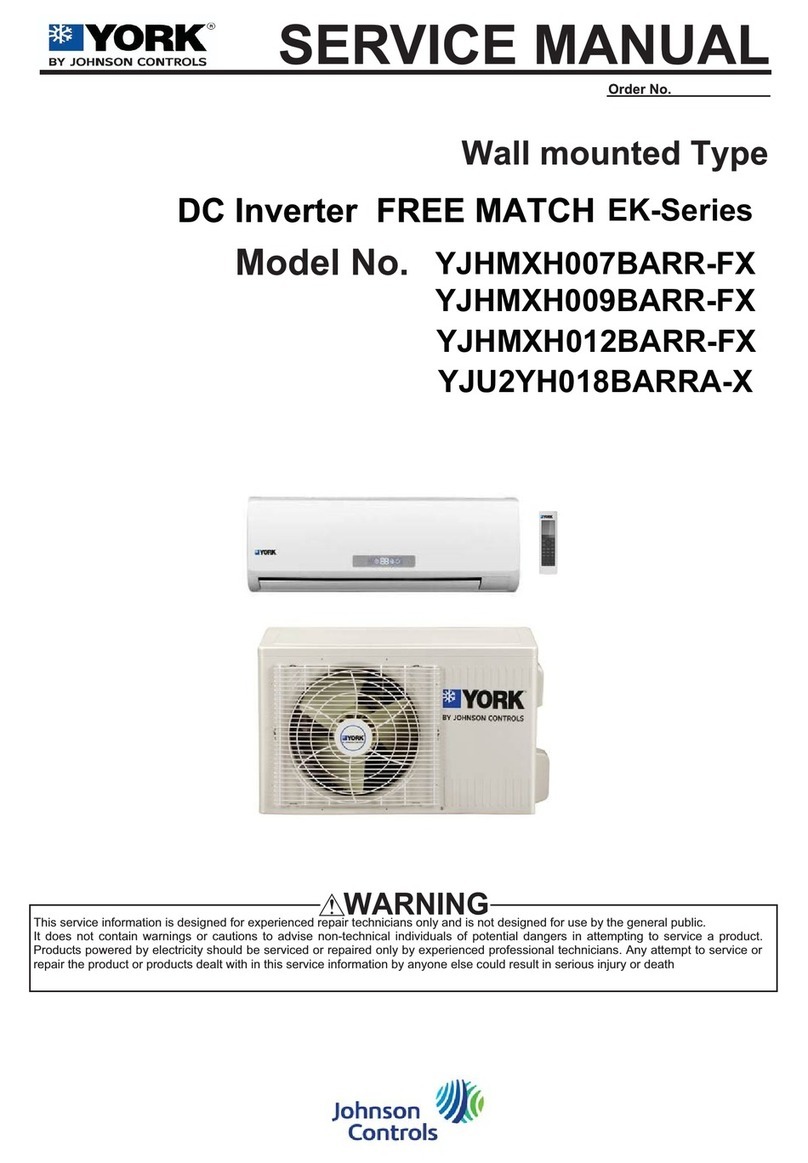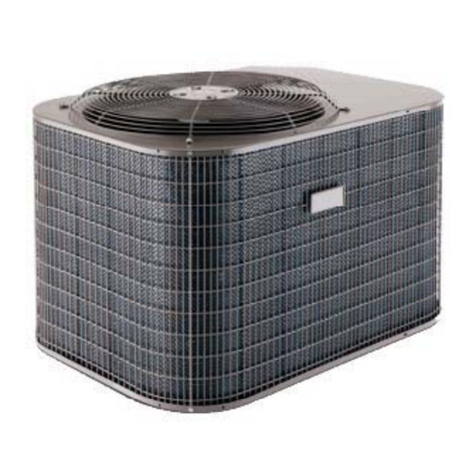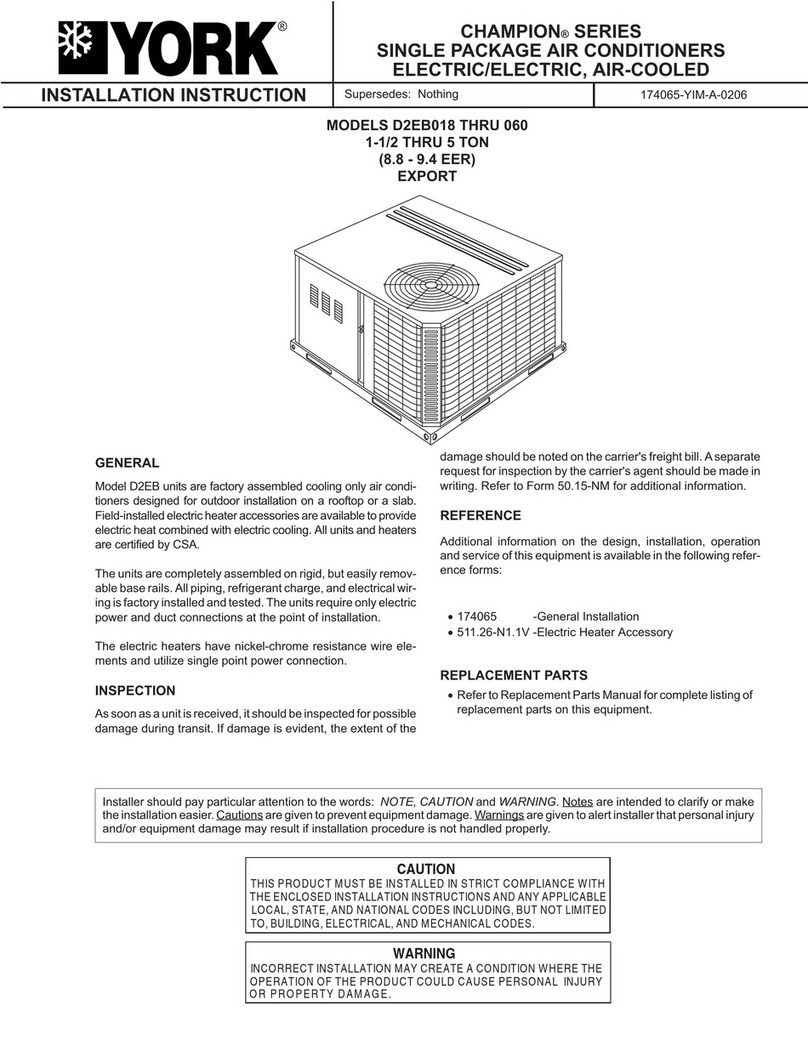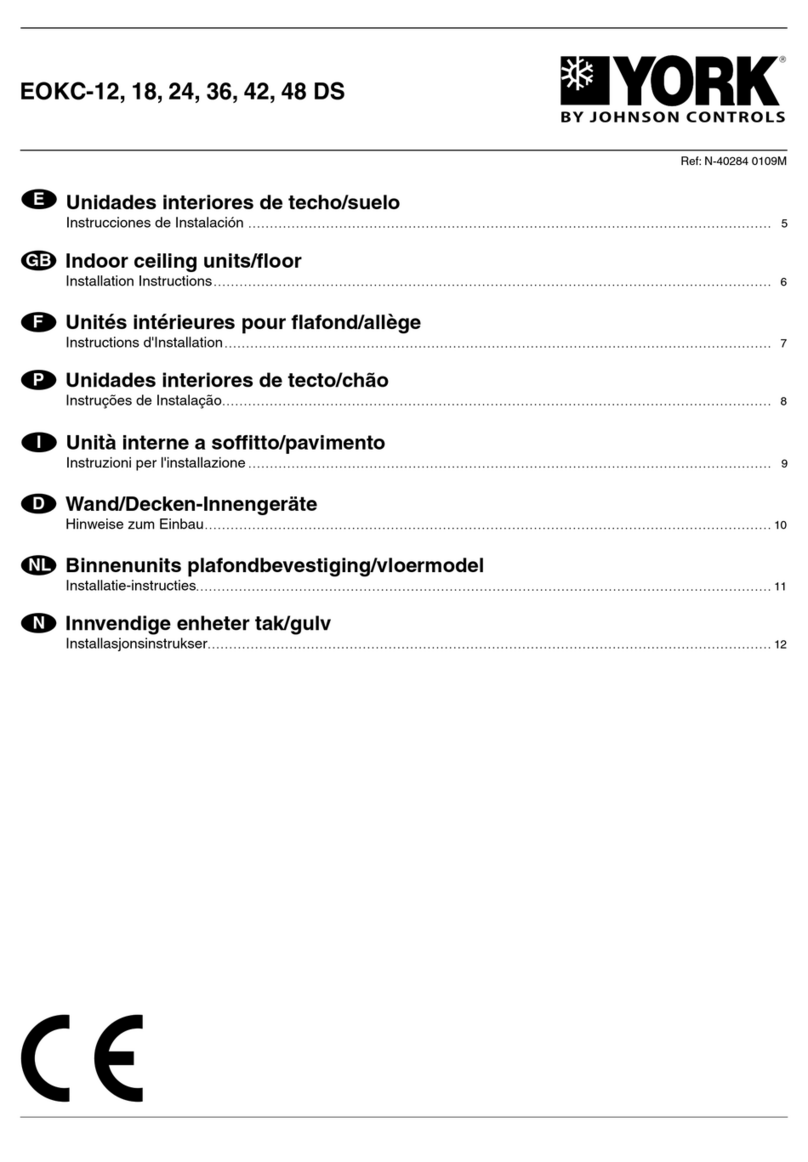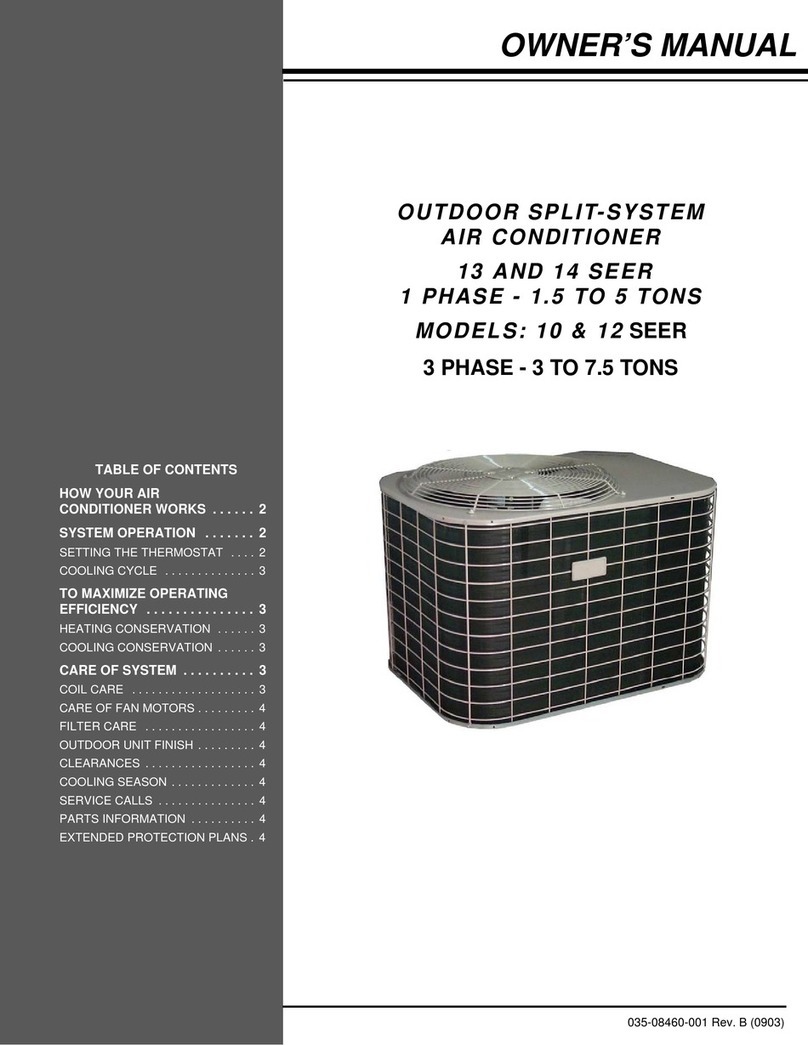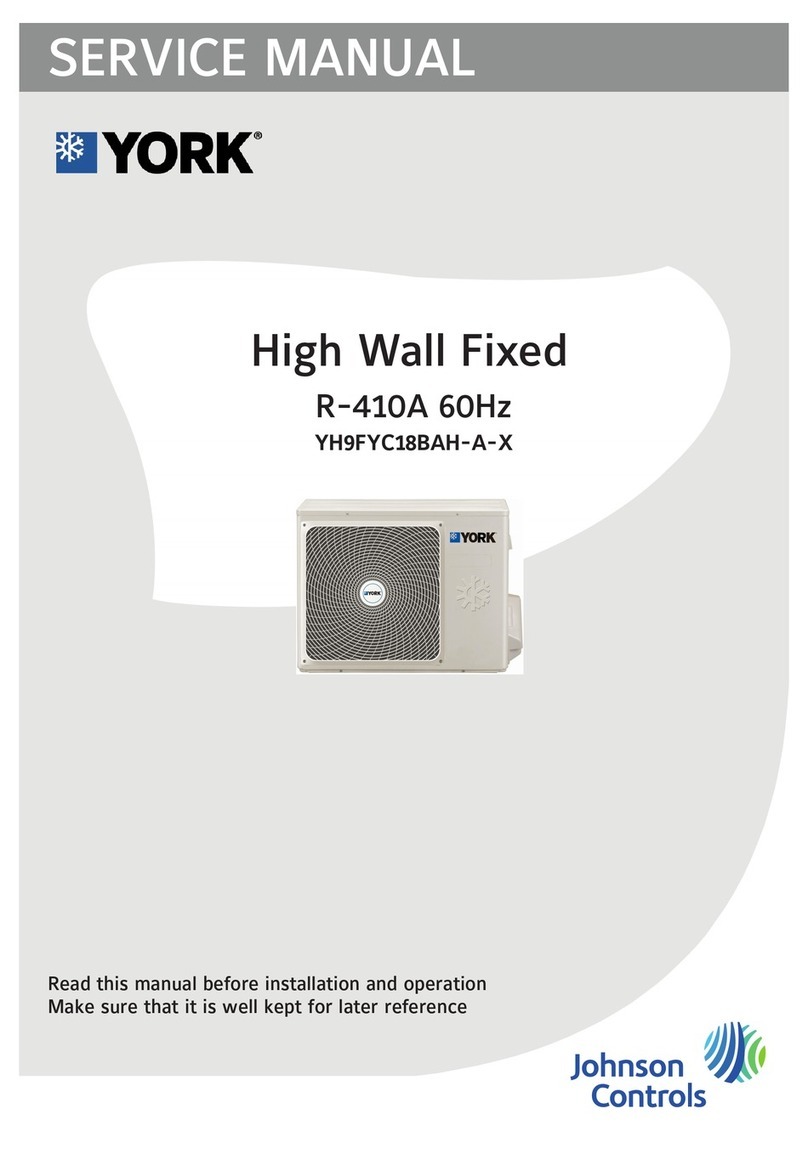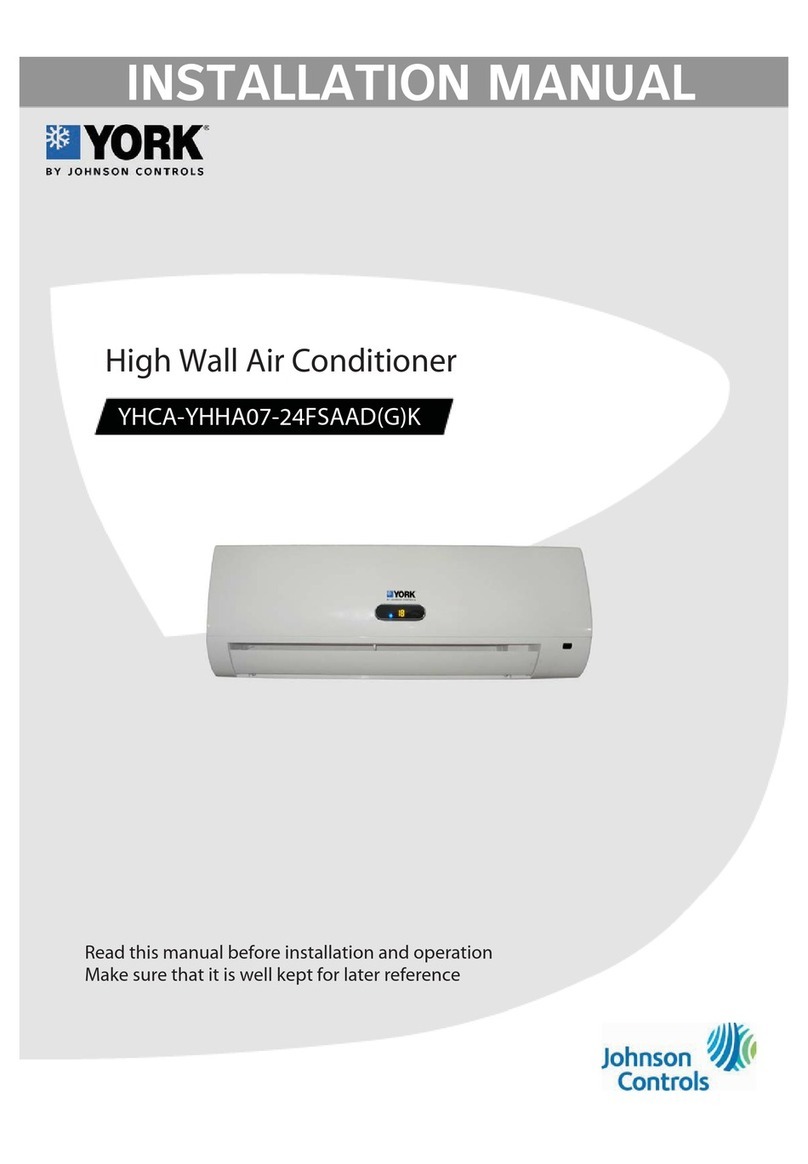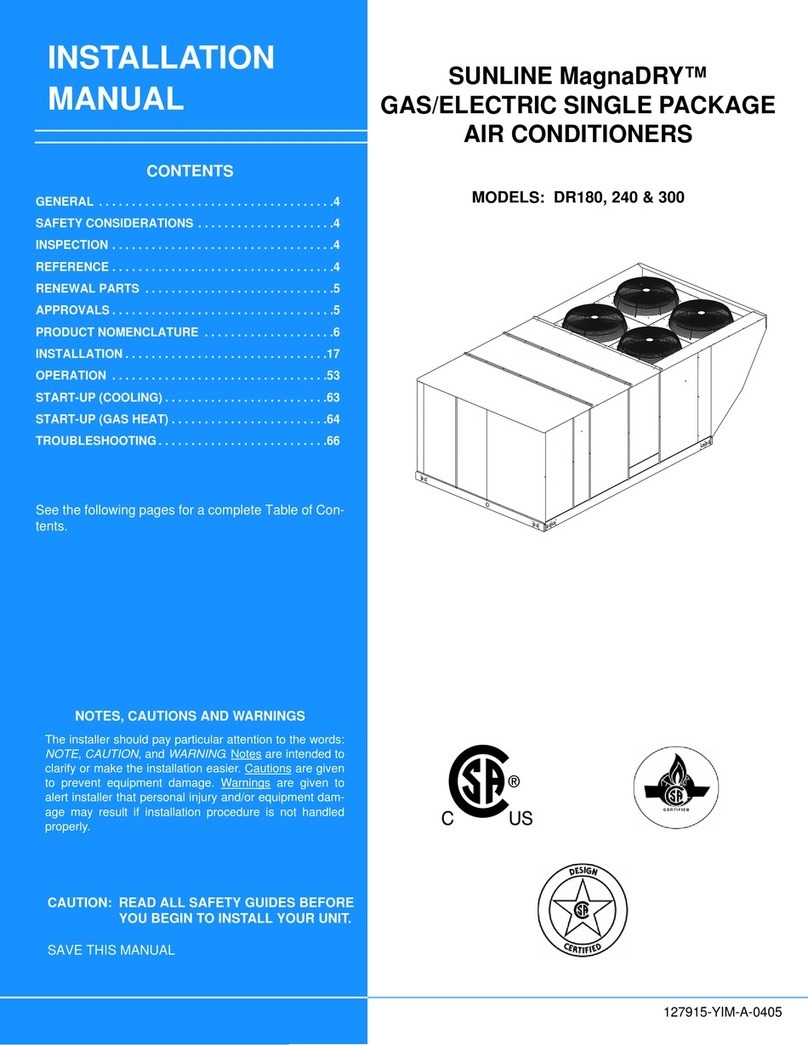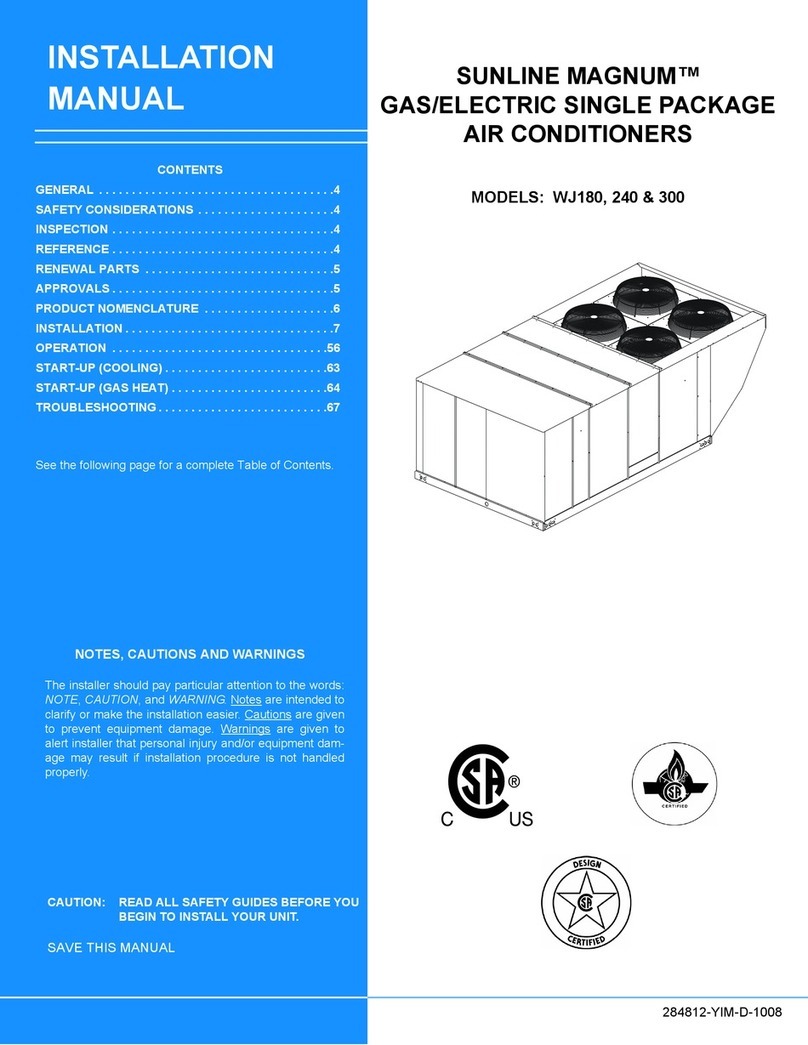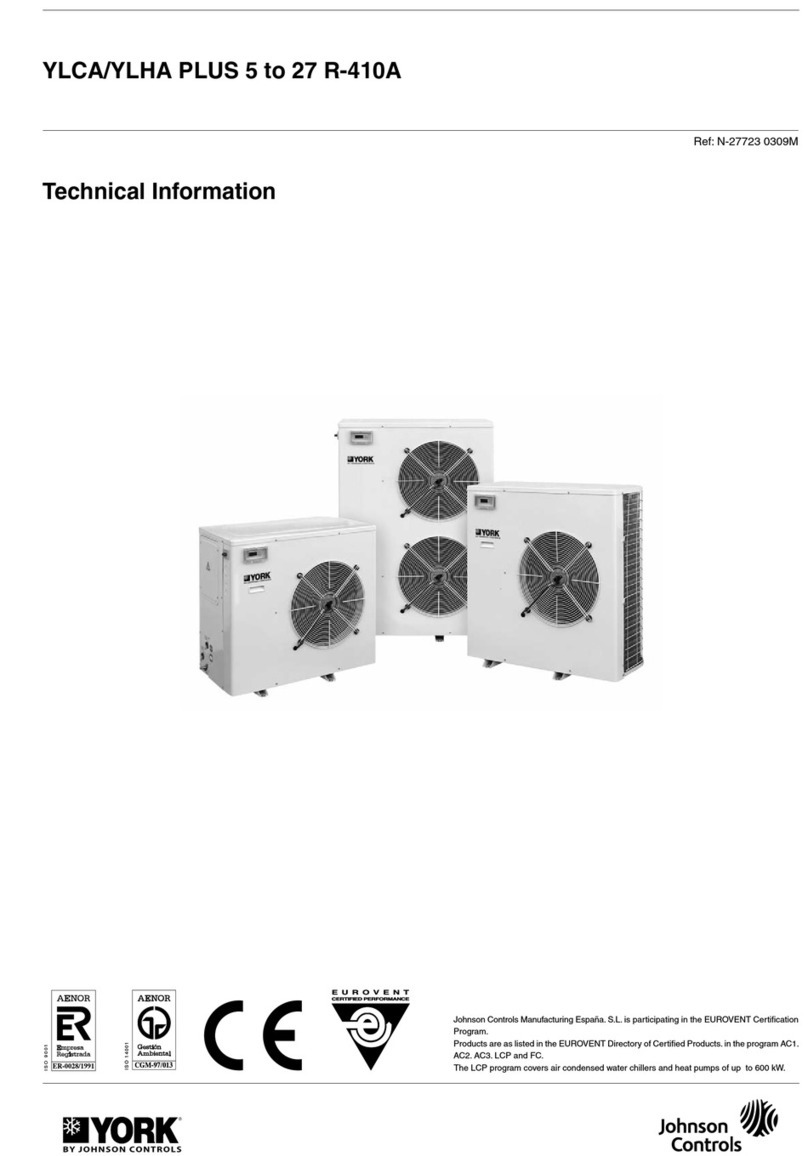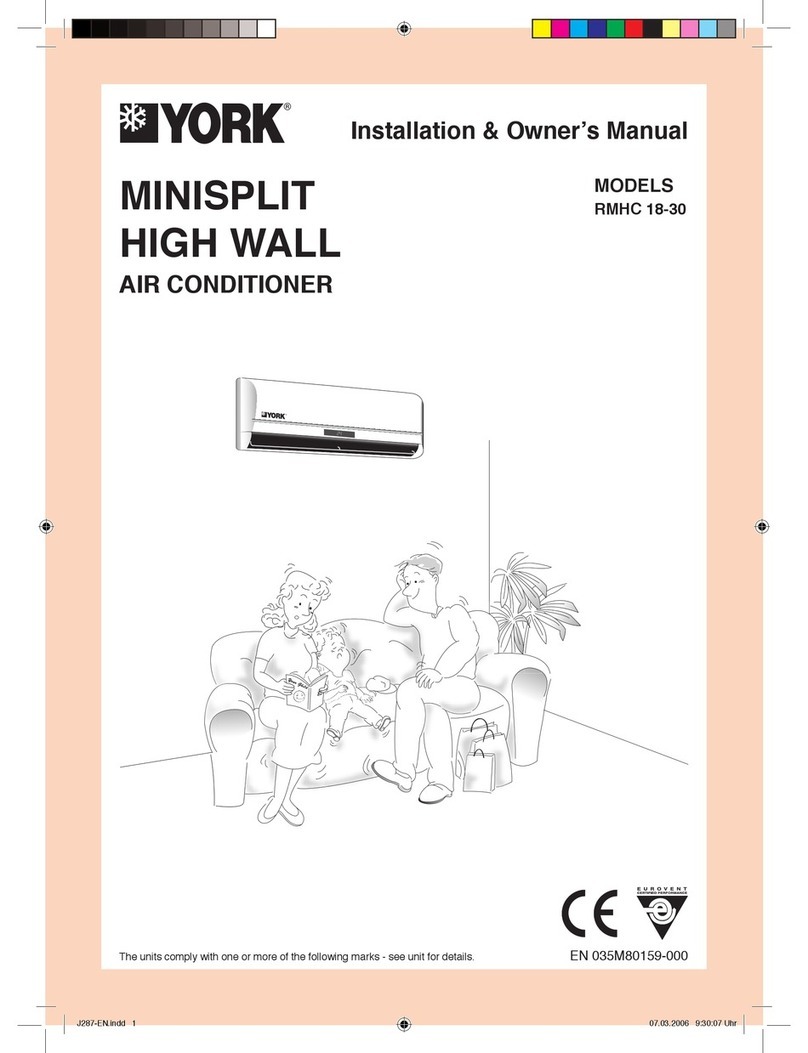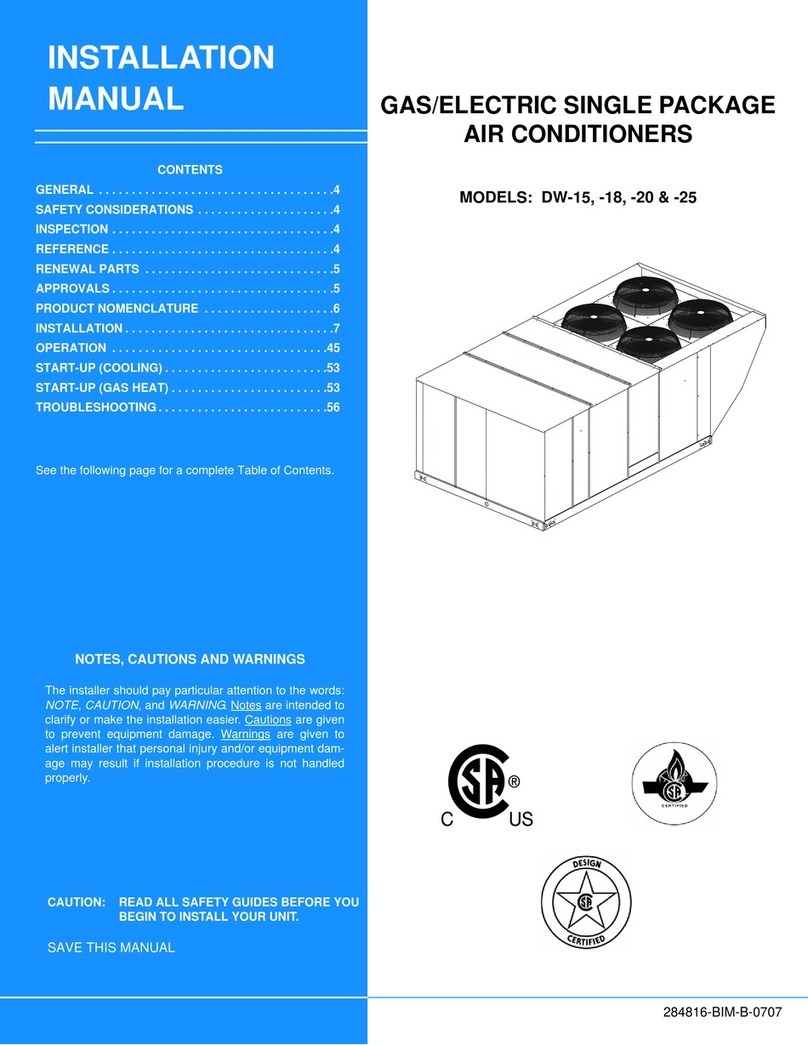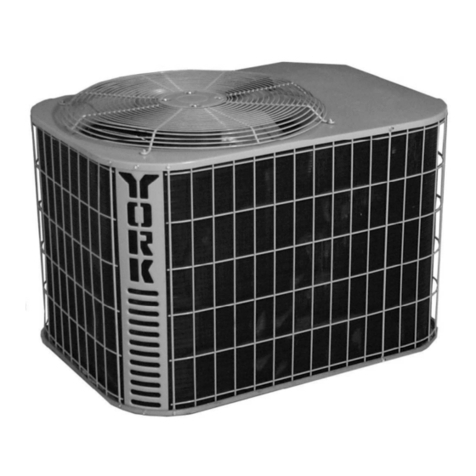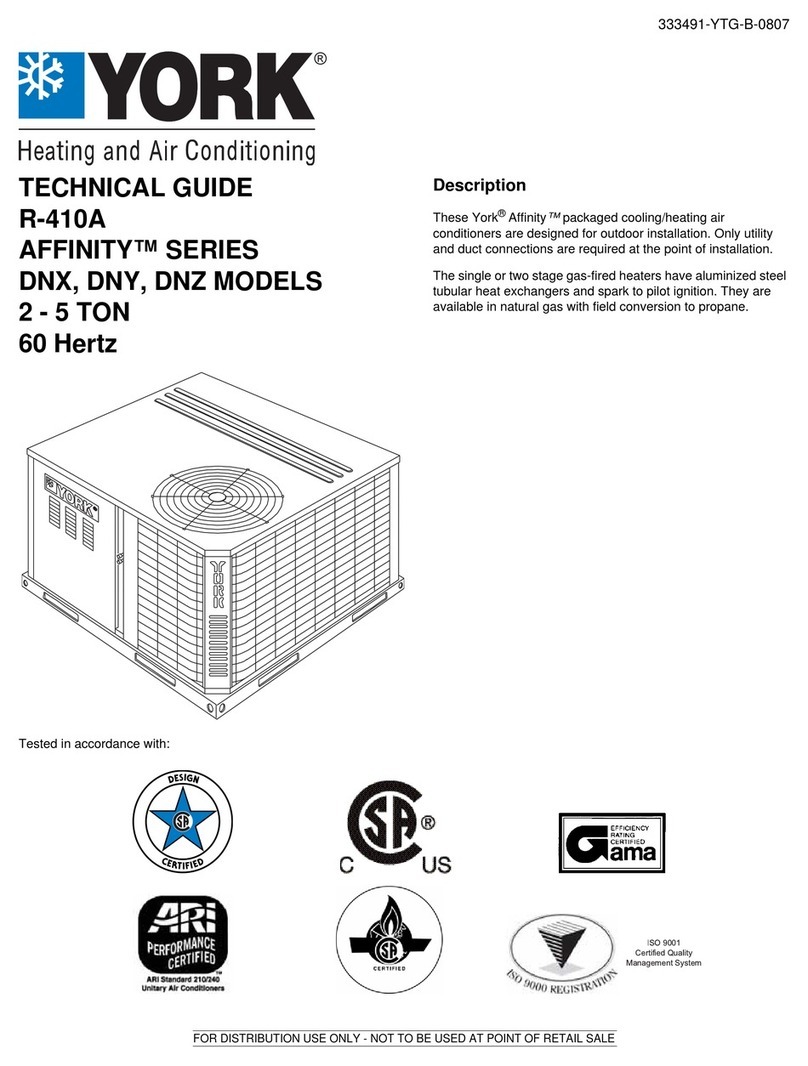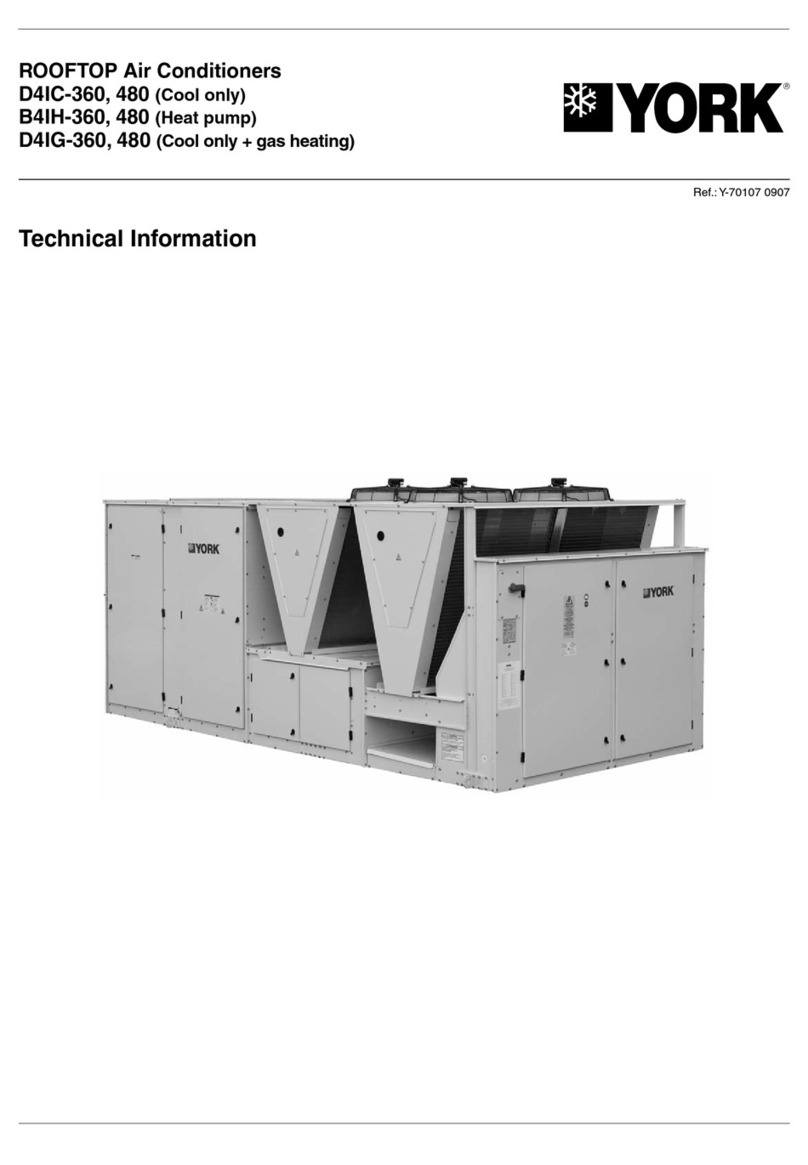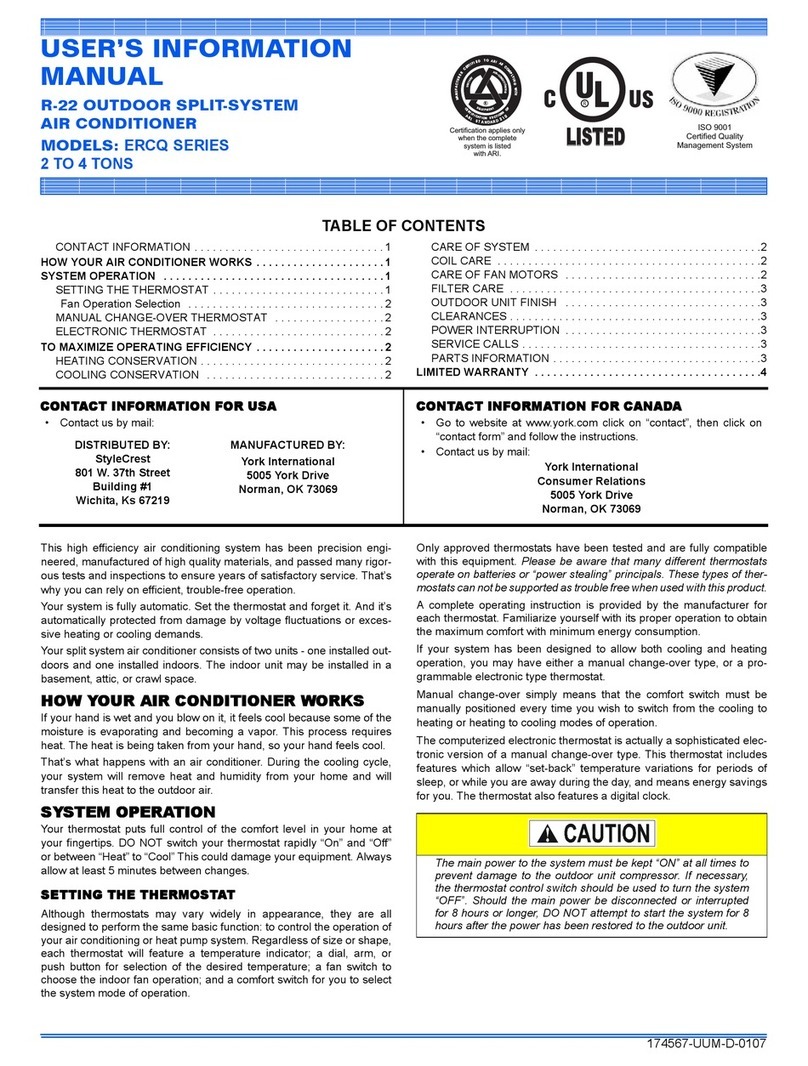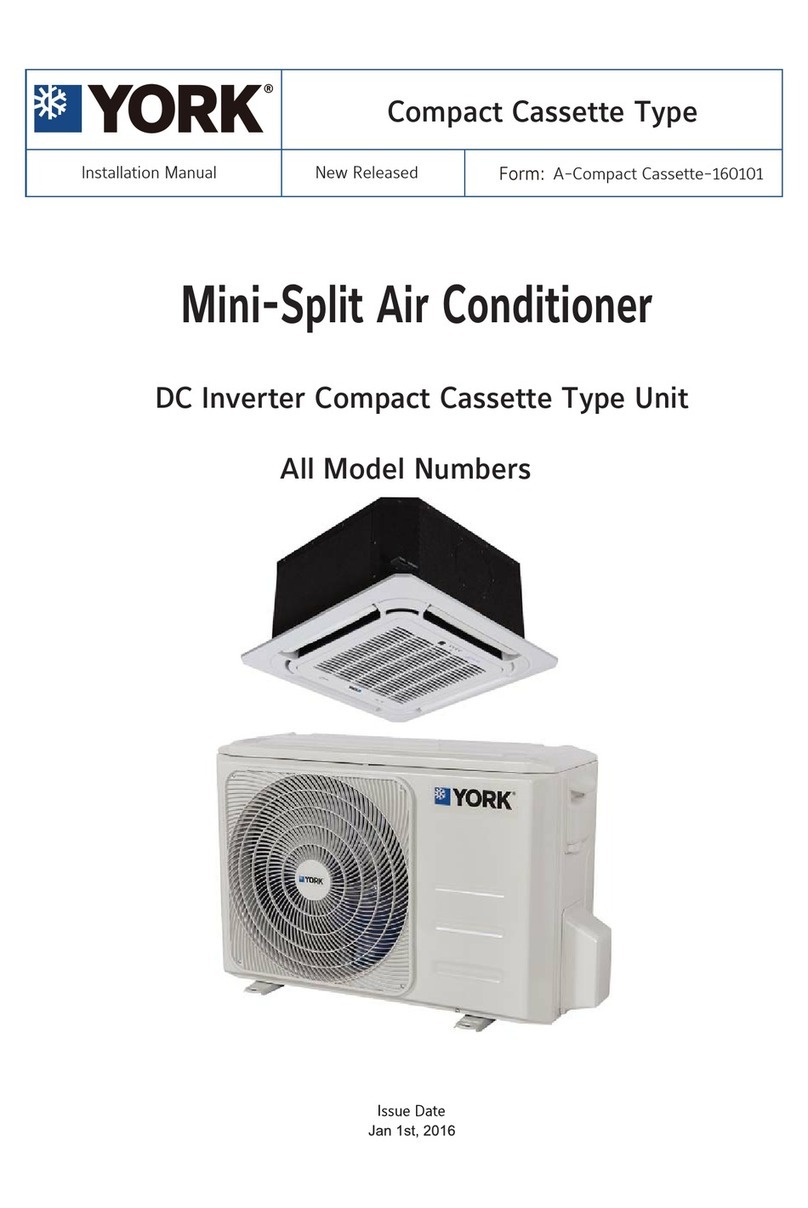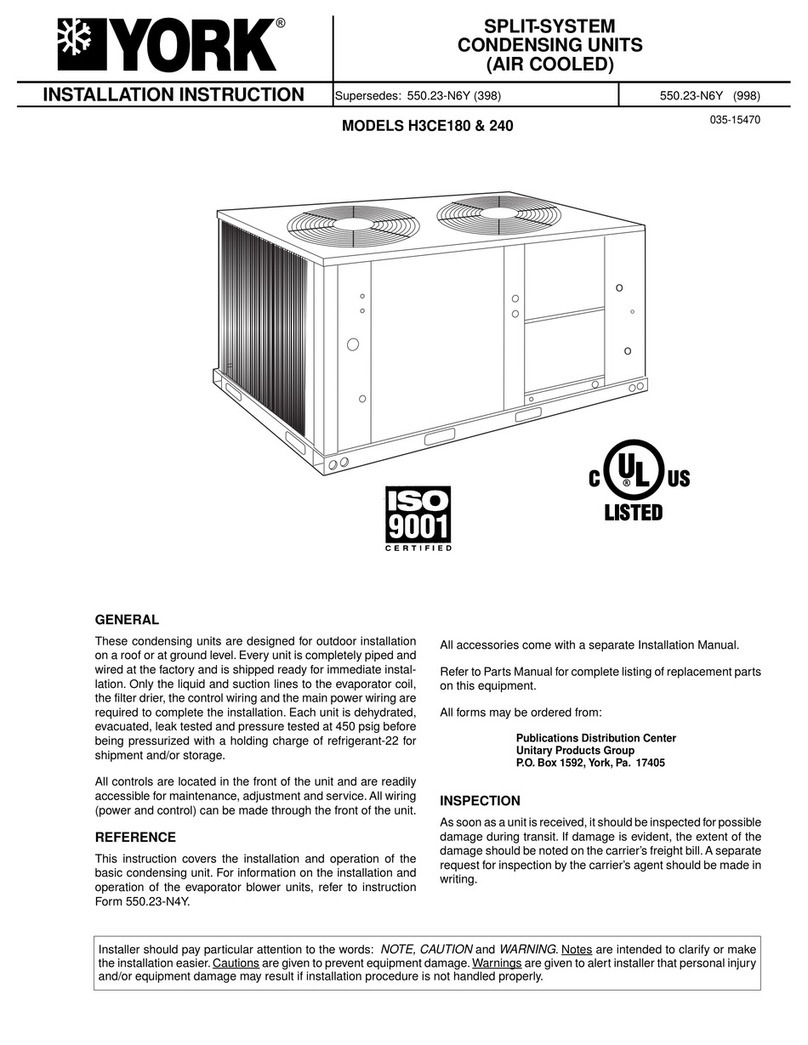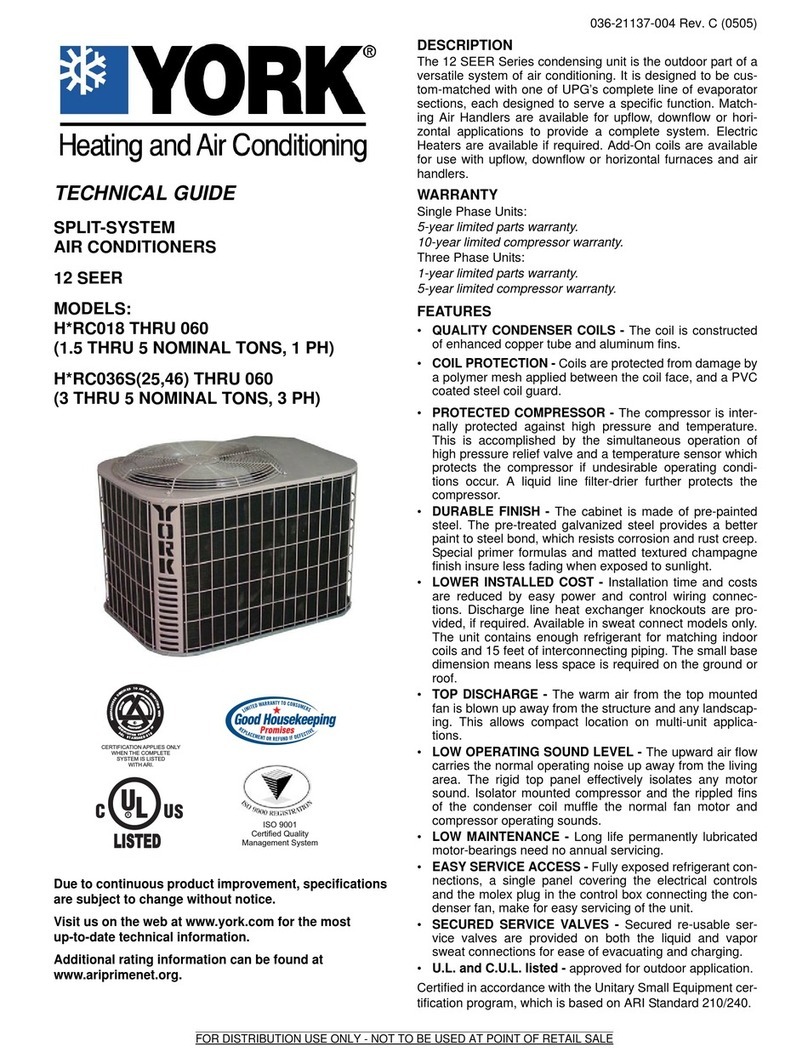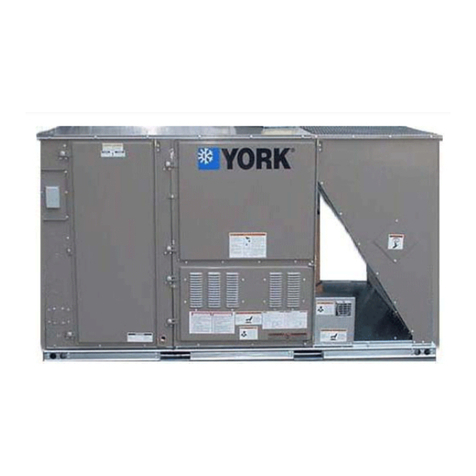
OPTIONAL ECONOMIZER RAIN HOOD
The following procedure should be used when assembling an
economizer rain hood onto a unit. Refer to Figure 3. The
outdoor and return air dampers, damper actuator, the linkage
and all the controls are factory mounted as part of the
economizer option.
All of the hood components, including the filters, the gasketing
and the hardware for assembling are located above the top
filter racks within the filter section. The outdoor air sensor is in
the bag of parts located at the bottom of the return air section.
1. With filter section access panel removed, take out hood
components, filters and sensor described above. Remove
and discard outdoor air opening cover on back unit (Upper
right hand corner).
2. Remove the 13mm (1⁄2in.) knockout (A) in the units rear
panel (located to the right side of the outdoor air opening).
Insert the two loose wires from inside the unit, into the
13mm (1⁄2in.) bushing provided. Insert wires and bushing
into knockout. Snap bushing into place.
3. Mount the outdoor air sensor to the rear panel, just below
the knockout described in Step 2. Secure with two
self-drilling screws at dimples (B) provided in the panel.
NOTE: Sensor must be positioned so that the sensing
ports are at the top (louvers pointing downward)
and terminal connections to the right.
4. Connect the two wires, indicated in Step 2, to the sensor
as follows:
•Wire #73 to terminal (+)
•Wire #74 to terminal (S)
5. Assemble the LH and RH side plates to the top cover
(2 screws each side) to form the hood. Apply gasketing to
the flange surface on each side plate. Extend gasketing
6mm(1⁄4in.)beyondtopandbottomofeachflangetoinsure
adequate corner sealing. Secure this assembly to the unit
back panel (upper right hand corner). First, remove screw
(C)onunittopcover.Thenslipflangeofhoodcoverinunder
flange of unit top cover, replace screw (C), engaging hole
(E) in hood flange and tighten. Attach the two side plates to
theunit panelby usingtwoself-drillingscrewsforeach side
plate at dimples (D) provided in the panel.
6. Position fillpiece at bottom of hood, between the two side
plates but do not secure at this time. (Slotted openings
MUSTbe downwardfor drainage).After fillpieceisproperly
positioned, note where contact is made with the unit panel.
Remove fillpiece and apply gasket material to this area to
provide a seal. Reposition fillpiece and secure with two
screws.
7. Install the two filters into the hood assembly, sliding down
along retainers on side plates, into fillpiece at bottom of
hood.
NOTE: Install filters so that “Air Flow” arrows point toward
the unit.
8. Install filter cover over the end of the hood with one screw
(center of hood), securing filters into position.
CAUTION: When proceeding with steps 9 and 10, extreme
care must be exercised while turning both the set
point and minimum position adjusting screws to
prevent twisting them off.
9. The enthalpy set point for the dampers may now be set by
selecting the desired set-point from graph in Figure 6. For
a single enthalpy economizer, carefully turn the set-point
adjusting screw to the “A”, “B”, “C” or “D” setting
corresponding to the lettered curve. For a dual enthalpy
economizer, carefully turn the set-point adjusting screw
fully clockwise past the “D” setting.
10. To check that the damper blades move smoothly without
binding, carefully turn the minimum position adjusting
screw fully clockwise and then energize and de-energize
terminals “R” to “G”. With terminals “R” to “G” energized,
turn the minimum position screw counterclockwise until the
desired minimum position has been attained.
11. Replace the filter section access panel.
BGASKET
C
HOOD
COVER OUTDOOR AIR
SENSOR
A
FILTER SECTION
ACCESS PANEL
D
R. H.
SIDE
PLATE
D
ED
D
GASKETED
FLANGE
FILTER
COVER
L. H. SIDE
PLATE
FILTERS
FILLPIECE
OUTDOOR AIR
OPENING COVER
SIDE DUCT
APPLICATION SHOWN
FIG. 3 - ECONOMIZER RAIN HOOD ASSEMBLY (OPTION)
530.26-N1YI
Unitary Products Group 5
